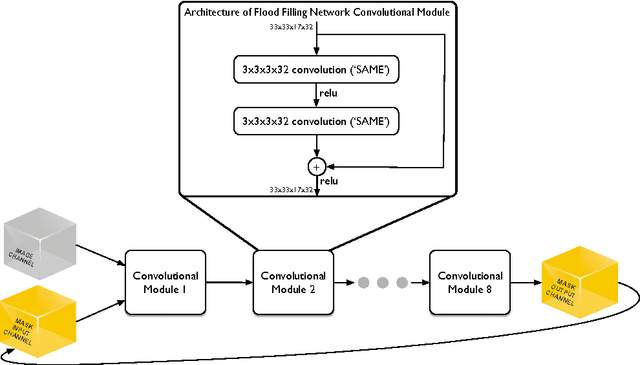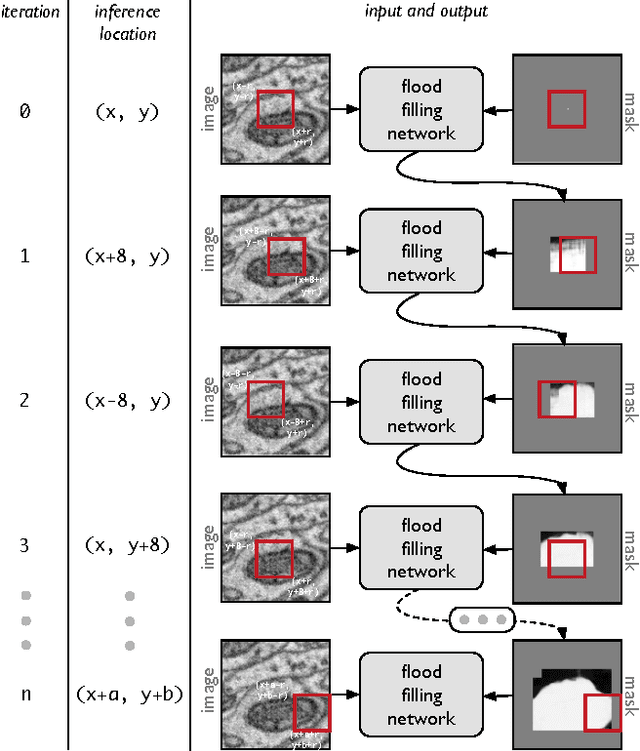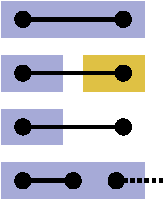Winfried Denk
Flood-Filling Networks
Nov 01, 2016



Abstract:State-of-the-art image segmentation algorithms generally consist of at least two successive and distinct computations: a boundary detection process that uses local image information to classify image locations as boundaries between objects, followed by a pixel grouping step such as watershed or connected components that clusters pixels into segments. Prior work has varied the complexity and approach employed in these two steps, including the incorporation of multi-layer neural networks to perform boundary prediction, and the use of global optimizations during pixel clustering. We propose a unified and end-to-end trainable machine learning approach, flood-filling networks, in which a recurrent 3d convolutional network directly produces individual segments from a raw image. The proposed approach robustly segments images with an unknown and variable number of objects as well as highly variable object sizes. We demonstrate the approach on a challenging 3d image segmentation task, connectomic reconstruction from volume electron microscopy data, on which flood-filling neural networks substantially improve accuracy over other state-of-the-art methods. The proposed approach can replace complex multi-step segmentation pipelines with a single neural network that is learned end-to-end.
Maximin affinity learning of image segmentation
Nov 28, 2009



Abstract:Images can be segmented by first using a classifier to predict an affinity graph that reflects the degree to which image pixels must be grouped together and then partitioning the graph to yield a segmentation. Machine learning has been applied to the affinity classifier to produce affinity graphs that are good in the sense of minimizing edge misclassification rates. However, this error measure is only indirectly related to the quality of segmentations produced by ultimately partitioning the affinity graph. We present the first machine learning algorithm for training a classifier to produce affinity graphs that are good in the sense of producing segmentations that directly minimize the Rand index, a well known segmentation performance measure. The Rand index measures segmentation performance by quantifying the classification of the connectivity of image pixel pairs after segmentation. By using the simple graph partitioning algorithm of finding the connected components of the thresholded affinity graph, we are able to train an affinity classifier to directly minimize the Rand index of segmentations resulting from the graph partitioning. Our learning algorithm corresponds to the learning of maximin affinities between image pixel pairs, which are predictive of the pixel-pair connectivity.
 Add to Chrome
Add to Chrome Add to Firefox
Add to Firefox Add to Edge
Add to Edge